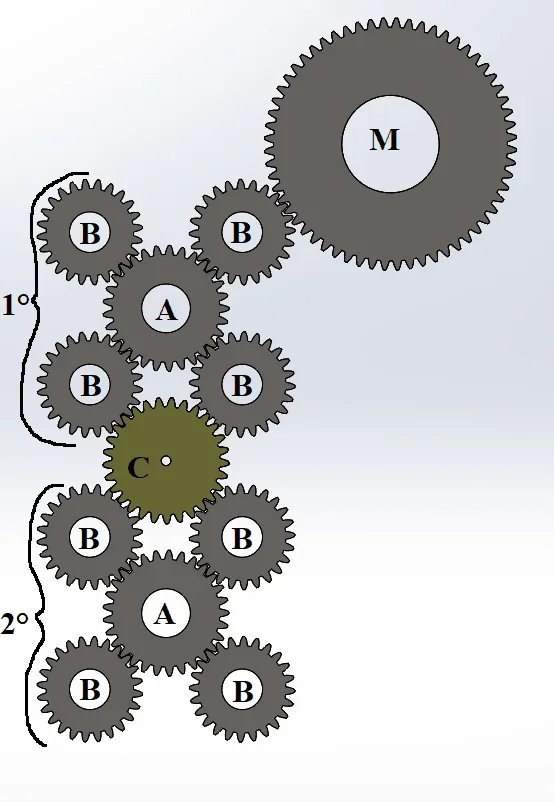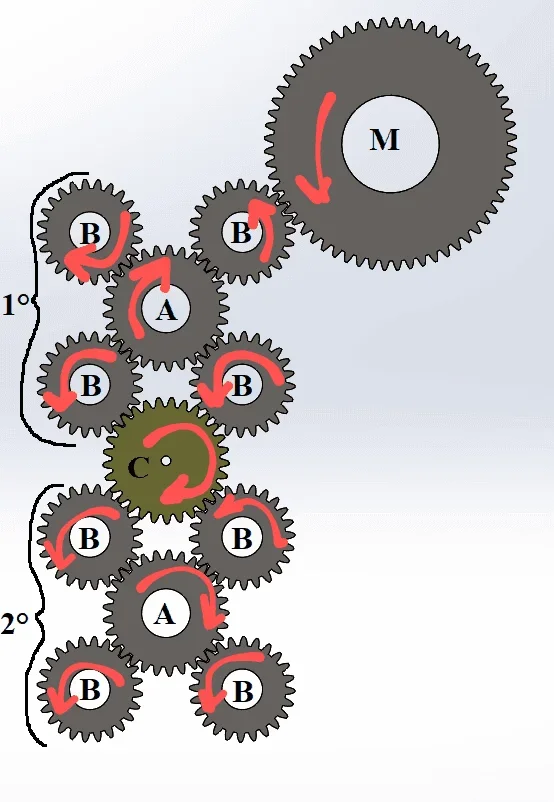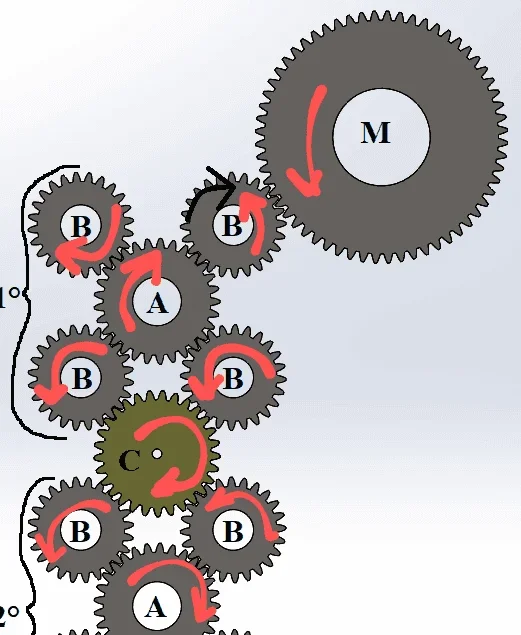CristianT
Guest
Good evening to all,
I would have a doubt that I couldn't find answers.
with a 2.5 module, we have:
- a moving wheel m
- toothed wheel b (z=24)
- toothed wheel (z=29)
imagining to connect the 1st block with the 2nd as in figure, I have special conditions for the toothed wheel c?
i.e., in addition to having the same module and tangent primitive diameters, for the engraving of this closed circuit, do I have any condition to respect on the number of teeth of the wheel c or on the positioning or anything else that escapes me?
thanks to everyone in advance.
cristian.
I would have a doubt that I couldn't find answers.
with a 2.5 module, we have:
- a moving wheel m
- toothed wheel b (z=24)
- toothed wheel (z=29)
imagining to connect the 1st block with the 2nd as in figure, I have special conditions for the toothed wheel c?
i.e., in addition to having the same module and tangent primitive diameters, for the engraving of this closed circuit, do I have any condition to respect on the number of teeth of the wheel c or on the positioning or anything else that escapes me?
thanks to everyone in advance.
cristian.



